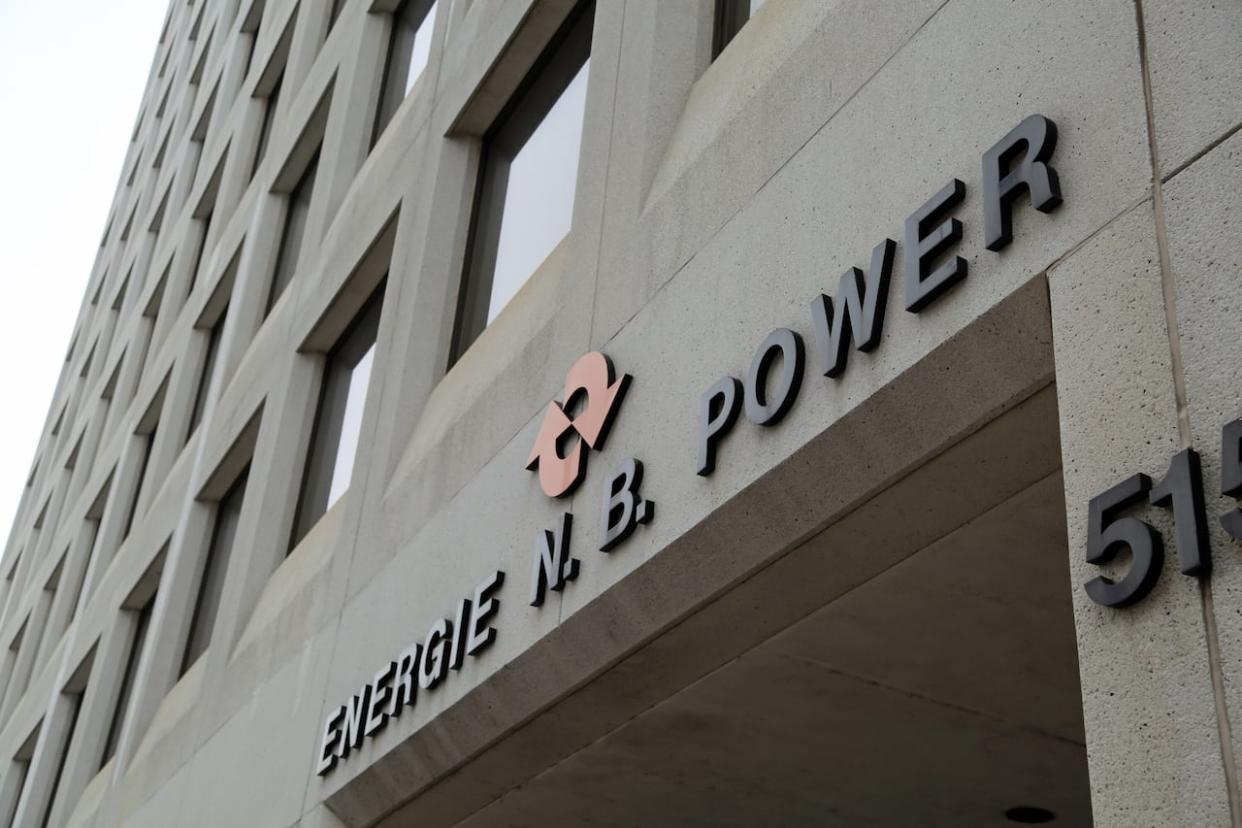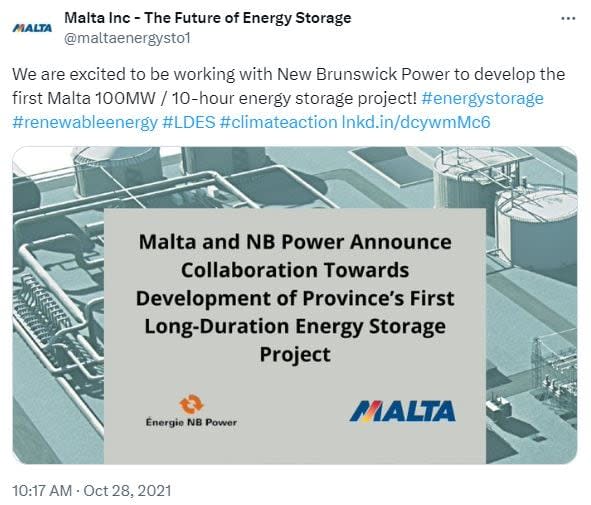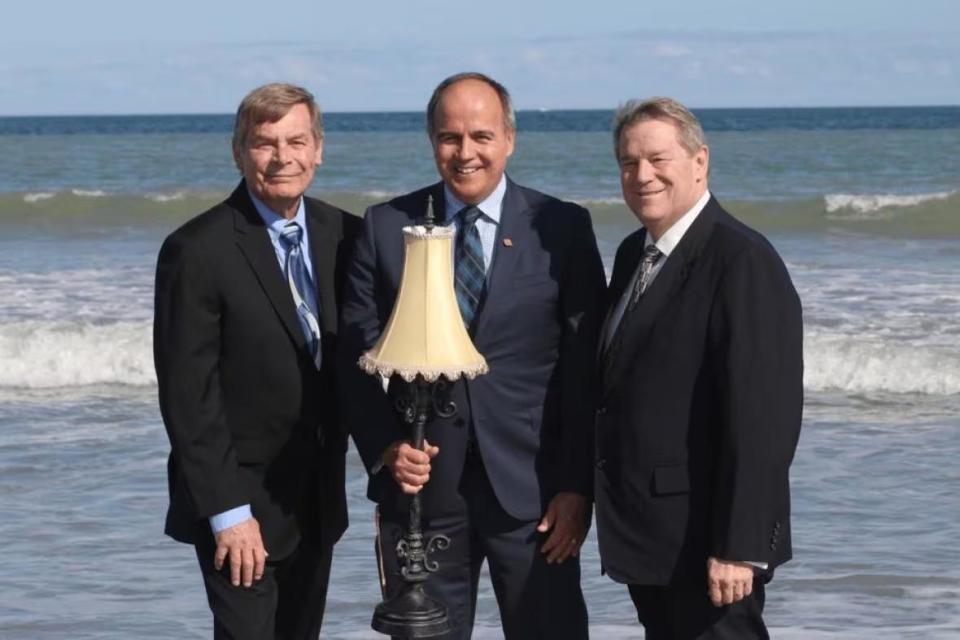N.B. Power quietly drops salt-based energy storage plan it touted as world first in 2021

An ambitious plan announced by N.B. Power two years ago to sponsor construction of a world first-of-its-kind salt-based energy storage system has been shelved indefinitely by the Crown corporation.
But unlike an earlier big idea — a hydrogen from seawater project that it lost $13 million on in 2019 — the utility says this time no funds were spent.
"N.B. Power did not invest any money in the project," wrote N.B. Power spokesperson Dominique Couture in an email to CBC News.
Less clear is whether the New Brunswick government escaped financial losses.
In October 2021, N.B. Power announced an initiative with the American company Malta Inc. to have a 100-megawatt energy storage facility built by 2024 that would be capable of discharging 1,000 megawatt hours of electricity over a 10-hour period.

A model of what a 100-megawatt Malta energy storage system planned for New Brunswick was expected to look like. N.B. Power was initially excited by the idea of converting electricity into heat and back again even though Malta has not yet built a working plant. (Malta Inc / Linkedin)
The plant proposed to take electricity from N.B. Power's transmission grid at minimal cost during low demand periods and convert it into heat to be stored in tanks of molten salt at temperatures up to 565 C.
From there the heat was to be reconverted into electricity and sent back to the grid when needed. It was called an "exciting" idea by N.B. Power that would help it manage peak loads as well as even out the up-and-down electrical output of provincial windmills.
"This initiative demonstrates N.B. Power's leadership role in helping New Brunswick transition to a low-carbon economy," it said in its 2021 announcement.

N.B. Power has been looking for ways to store electricity to help manage the up-and-down production of windmills on its system. (Shane Fowler/CBC News)
By size, the project would have eclipsed the largest electricity storage system in Atlantic Canada several times over. Saint John Energy currently claims that title with four utility-sized Tesla batteries that combined can store 7.5 megawatts of electricity.
Although Malta has never built one of its energy storage plants, N.B. Power was confident enough that the unique technology would work; it took the unusual step of announcing both a projected starting date for the plant and likely employment levels.

Malta announced its partnership with N.B. Power on Twitter (now X) in 2021. No similar announcements were made when the relationship eventually fizzled. (Malta/X)
"While still in the planning and development stage the facility is targeted to be in-service in 2024," said the announcement.
"Upon its completion, the 1,000 mwh (megawatt hour) facility would be one of the largest energy storage systems of its kind in the world, and lead to the creation of an estimated 225 new jobs during construction, and up to 15 during operation,"
However, little has been said about the plan by N.B. Power since and this summer in an updated "integrated resource plan" issued for its next 20 years, the salt-based energy storage plant was conspicuously absent.
In an email, Couture said N.B. Power came to view the project as too expensive and dropped it.
"Based on the information we had at the time of publishing the IRP, (integrated resource plan) the Malta energy storage solution was not considered an early-term, least-cost resource addition," wrote Couture.
In a brief interview last week, Malta's head of sustainability, Luke Rose, said he is unable to discuss why the project was abandoned.
"We have a company policy not to comment on internal decision-making processes of our customers, so I have no comment for you," said Rose.
Malta now says it expects to have its first plant in service in 2027 but won't say who it is for or where it will be.
Although N.B. Power said it did not spend any money on the cancelled project, the New Brunswick government's financial involvement is less certain.

Former N.B. Power CEO Gaëtan Thomas, centre, poses with Joi Scientific executives Robert Koeneman, left, and Traver Kennedy on a beach in Cape Canaveral, Fla. N.B. Power spent $13 million on a failed attempt to make the company's plan to extract hydrogen from seawater work. (Joi Scientific)
In 2021 the province's economic development agency Opportunities New Brunswick was included with Malta and N.B. Power as a participant in the original announcement.
And in a second announcement last year Malta and a department of the University of New Brunswick were awarded a grant from the New Brunswick Innovation Foundation to study "advanced modularization" construction techniques that Malta could use to build its plant.
The minister responsible for Opportunities New Brunswick at the time of both Malta announcements was Arlene Dunn and she is quoted in press releases for each as backing the energy storage project.
"Our government remains committed to supporting energy innovation across the province," said Dunn in the construction study funding announcement.

Statements by Arlene Dunn supporting the Malta energy storage project appeared in press releases in 2021 and 2022 when she was the minister responsible for Opportunities New Brunswick. Despite that, the agency says it did not directly give any money to the company behind the project. (Jacques Poitras/CBC)
In response to questions about the extent of government financial involvement in the energy storage proposal a spokesperson for Opportunities New Brunswick said "no financial support" was provided directly to Malta.
However, explanations about why Opportunities New Brunswick was involved in both Malta announcements if it had no financial involvement in the energy storage proposal were not immediately provided.
N.B. Power has been burned financially by big ideas and world-first projects in the past. In addition to its failed hydrogen from seawater investments, the utility suffered major losses by undertaking the first ever refurbishment of a CANDU 6 reactor in 2008.
Estimates from Atomic Energy of Canada that the renovation would cost $1.5 billion and take 18 months to complete proved ruinously optimistic with work dragging on more than 50 months and going $1 billion over budget.
Earlier this year N.B. Power issued a scaled down request for proposals for the supply of 50 megawatts of battery storage with the capability to discharge electricity over four hours.


